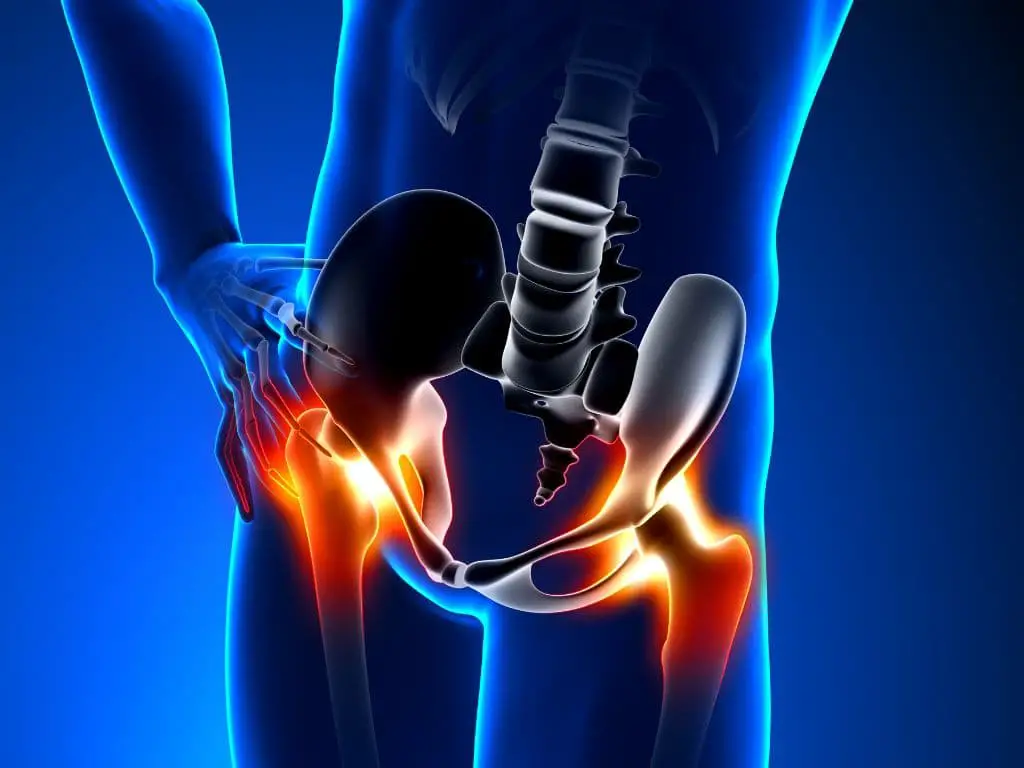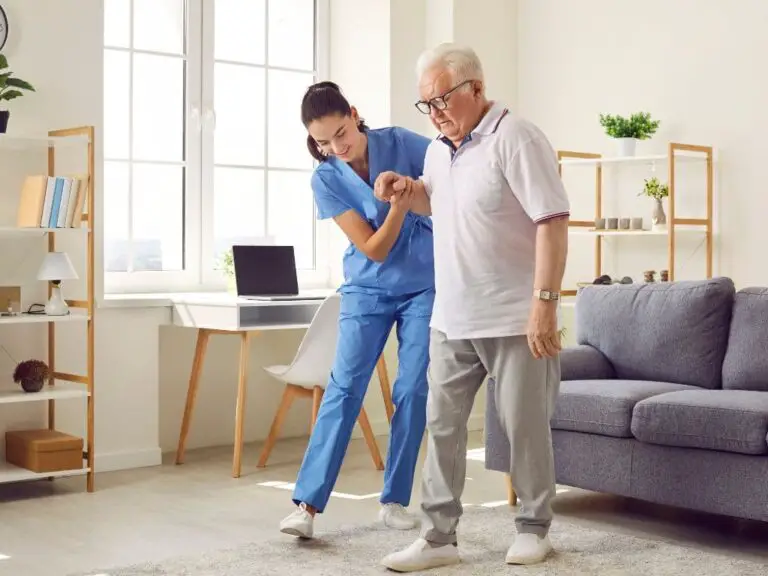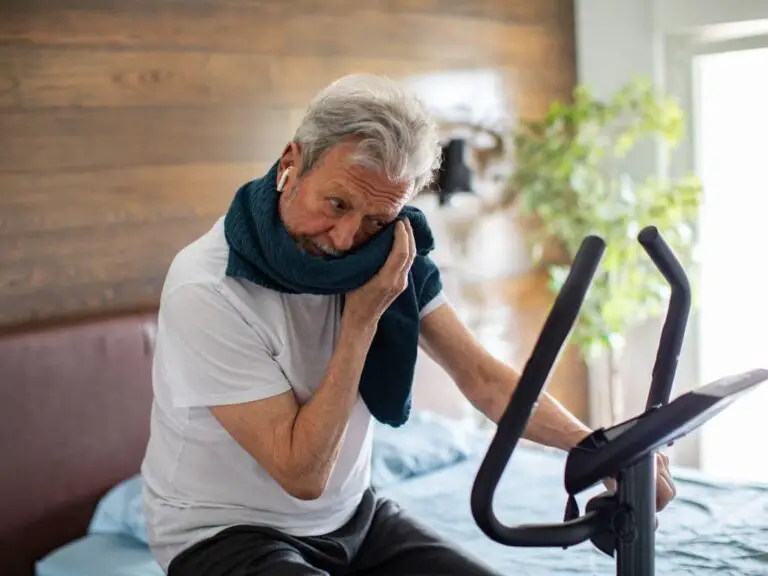Does Physical Therapy Really Help Hip Bursitis?
Physical therapy is a commonly used nonoperative treatment for hip bursitis, or trochanteric bursitis, and is often combined with other methods such as corticosteroid injections and nonsteroidal anti-inflammatory medications. According to a systematic review of multiple studies, physical therapy, along with other conservative treatments, can provide a significant improvement in symptoms and decrease in pain for most patients. However, for cases that do not respond to these treatments, more advanced therapeutic options such as low-energy shock-wave therapy and various surgical techniques have been shown to be effective.

Hip Bursitis: Causes and Symptoms
Hip bursitis, also known as trochanteric bursitis, is a common condition characterized by chronic lateral hip pain. This pain is often exacerbated by active abduction, passive adduction, and direct palpation. The condition is most prevalent in middle-aged to elderly adults, but it can affect individuals of all ages.
Causes:
The exact cause of hip bursitis is multifactorial and can vary among individuals. One of the most common causes is the irritation or inflammation of the bursa, a small, fluid-filled sac that acts as a cushion between bones and soft tissues. This can be due to overuse, injury, or an underlying condition such as arthritis. The condition can also be associated with the iliotibial band (ITB) and fascia lata, which act as a lateral tension band to resist tensile strains on the femur. In some cases, tears in the gluteus medius, often referred to as “rotator cuff tears of the hip,” may contribute to the development of hip bursitis.
Symptoms:
The primary symptom of hip bursitis is pain on the outer side of the hip, which can sometimes extend to the thigh region. This pain can be sharp and intense initially, but it may become more of a dull ache over time. The pain is often worse at night, especially when lying on the affected side, and during activities that involve crossing the legs. Other symptoms can include swelling and tenderness over the hip area, as well as stiffness and reduced range of motion in the hip.
It’s important to note that while hip bursitis is often treated with nonoperative measures such as activity modification, physical therapy, weight loss, corticosteroid injection, and nonsteroidal anti-inflammatory medications, surgical intervention may be necessary in refractory cases.
How Does a Physical Therapist Determine if You Have Hip Bursitis?
The diagnosis of hip bursitis is typically made by a physical therapist through a combination of patient history, physical examination, and sometimes imaging studies.
Patient History: The physical therapist will first take a detailed history of the patient’s symptoms. Patients with hip bursitis often report pain on the outside of the hip that may extend to the thigh and knee. The pain is typically worse when lying on the affected side, during activities that involve hip movement, and when getting up from a seated position. The onset of symptoms may be gradual or sudden, and the pain may be constant or intermittent.
Physical Examination: During the physical examination, the therapist will assess the patient’s hip range of motion and strength. They will also palpate (touch) the outer hip area to identify any tenderness. One common test used to diagnose hip bursitis is the FABER test (Flexion, ABduction, and External Rotation), where the patient lies on their back and the therapist moves the affected leg into flexion, abduction, and external rotation. If this maneuver reproduces the patient’s pain, it may indicate hip bursitis.
Imaging Studies: While the diagnosis of hip bursitis is primarily clinical, imaging studies like X-rays, ultrasounds, or MRI can sometimes be used to confirm the diagnosis and rule out other conditions. These imaging studies can show inflammation in the bursa, a small fluid-filled sac that reduces friction between the hip bone and the surrounding soft tissues.
Physical therapists can also use response to treatment as a diagnostic tool. If a patient’s symptoms improve with conservative treatments like physical therapy exercises, nonsteroidal anti-inflammatory drugs (NSAIDs), and corticosteroid injections, it supports the diagnosis of hip bursitis.
Benefits of Physical Therapy for Hip Bursitis
Hip bursitis, also known as trochanteric bursitis, is a common condition characterized by chronic lateral hip pain. Physical therapy is often a part of the conservative treatment approach for this condition. The benefits of physical therapy for hip bursitis are as follows:
- Pain Management: Physical therapy exercises and techniques can help in reducing the pain associated with hip bursitis. The exercises are designed to strengthen the hip muscles and improve flexibility, which can help in reducing the pressure on the bursa, thereby alleviating pain.
- Improved Mobility: Physical therapy can help in improving the mobility and function of the hip joint. This can make it easier for patients to perform daily activities and can improve their quality of life.
- Prevent Recurrence: Physical therapy can also help in preventing the recurrence of hip bursitis. By teaching patients exercises to strengthen the hip and improve flexibility, physical therapists can help prevent future episodes of bursitis.
- Non-invasive Treatment: Physical therapy is a non-invasive treatment option for hip bursitis. This means that it does not involve surgery or injections, which can have potential risks and side effects.
- Personalized Treatment: Physical therapy treatment plans are personalized to the individual patient’s needs and abilities. This means that the treatment can be tailored to the specific symptoms and severity of the bursitis, as well as the patient’s overall health and fitness level.
- Complementary to Other Treatments: Physical therapy can be used in conjunction with other treatments for hip bursitis, such as medication or corticosteroid injections. This can enhance the effectiveness of these treatments and help in achieving better overall outcomes.
Does Physical Therapy Always Help Hip Bursitis?
While physical therapy is a commonly used treatment for hip bursitis, it does not always provide significant symptom relief for all patients. Other treatments such as corticosteroid injections, low-energy shock-wave therapy, and various surgical options may be more effective in certain cases. More clinical data are needed to improve the methods of treatment for hip bursitis.
Hip bursitis is traditionally treated using nonoperative measures such as physical therapy, activity modification, weight loss, corticosteroid injections, and non-steroidal anti-inflammatory medications (NSAIDs). However, the efficacy of physical therapy in treating hip bursitis is not universally established.
Several studies have shown that a single corticosteroid injection can provide significant symptom improvement and pain reduction for most patients. Older studies from the 1980s tend to report better subjective responses to injection than more recent ones, but typically lack validated clinical outcome scores. In some cases, multiple injections and other modalities, such as physical therapy, ultrasound, and NSAIDs, are necessary.
However, two studies included in a systematic review found that low-energy shock-wave therapy (SWT) was superior to other nonoperative modalities including physical therapy. Furthermore, a study by Rompe et al. found that only 34% of patients were able to return to normal activity after 6 weeks of a home training program consisting of exercises similar to those used in physical therapy.
Surgical options such as endoscopic bursectomy, open osteotomy, and repair of tears to the gluteus medius and minimus muscles have also been shown to be beneficial in managing recalcitrant lateral hip pain.
Hip Bursitis Exercises for Seniors
Hip Bursitis exercises for seniors are designed to alleviate the pain and inflammation caused by the condition, and to strengthen the hip and surrounding muscles. These exercises should be performed slowly, and the intensity should be reduced if any pain is experienced.
- Hip Rotator Stretch: This exercise involves lying on one’s back with both knees bent and feet flat on the floor. The ankle of the affected leg is placed on the opposite thigh near the knee and gently pushed away from the body until a gentle stretch is felt around the hip. This stretch is held for 15 to 30 seconds and repeated 2 to 4 times.
- Iliotibial Band Stretch: This exercise involves leaning sideways against a wall, standing on the leg with the affected hip, and crossing the other leg in front. The affected hip is dropped out to the side of the body and against the wall, and then leaned away from until a stretch is felt. This stretch is held for 15 to 30 seconds and repeated 2 to 4 times.
- Straight-leg Raises to the Outside: This exercise involves lying on one’s side with the affected hip on top. The front thigh muscles of the top leg are tightened to keep the knee straight, and the top leg is lifted straight up toward the ceiling, about 30 centimeters off the floor. This is held for about 6 seconds, then the leg is slowly lowered. This is repeated 8 to 12 times.
- Clamshell: This exercise involves lying on one’s side with the affected hip on top and the head propped on a pillow. The feet and knees are kept together and the knees are bent. The top knee is raised, but the feet are kept together. The hips are not allowed to roll back. This position is held for 6 seconds, then the knee is slowly lowered and rested for 10 seconds. This is repeated 8 to 12 times.
These exercises are part of a comprehensive treatment plan and should be performed under the guidance of a healthcare professional. It’s important to make and attend all appointments, and to call the advice line if any problems are encountered. It’s also advisable to keep track of test results and maintain a list of any medications being taken.
When Should You Consider Surgery for Hip Bursitis?
Surgery for hip bursitis is generally considered as a last resort when all other non-surgical treatments have failed to relieve symptoms. This typically includes cases where persistent and severe pain is present, and it significantly impacts the quality of life or limits daily activities. Additionally, surgery might be considered if the inflammation and swelling of the bursa do not decrease with non-surgical treatments, or if there is an infection in the bursa that does not clear up with antibiotics.
The surgical procedure typically involves removing the inflamed bursa. The surgery can often be performed arthroscopically, which is a minimally invasive procedure. Following surgery, a rehabilitation program, including exercises such as the hip rotator stretch, iliotibial band stretch, straight-leg raises to the outside, and clamshell, may be recommended to help restore strength and mobility to the hip.
Frequently Asked Questions
-
Does physical therapy really help hip bursitis?
Hip bursitis can be treated with physical therapy. It reduces pain, swelling and stiffness. Movement experts are physical therapists. Physical therapists improve the quality of your life by providing hands-on treatment, education and prescribing movement.
-
Is walking good for hip bursitis?
Jumping and running can worsen hip pain due to arthritis or bursitis. Humphrey suggests that walking is better.
-
How often should you do exercises for hip bursitis?
The best time and frequency to begin hip bursitis exercises will be determined by your physician. It is recommended to perform the hip bursitis exercises at least once a week. You can use a floor mat, but you’ll also need a cushion and/or a pillow.
-
How often should you do trochanteric bursitis exercises?
The time and frequency of your hip bursitis exercises will be determined by your physician. It is recommended to perform the hip bursitis exercises at least once a week. You can use a floor mat, but you’ll also need a cushion and/or a pillow.
-
What is the best sitting position for hip pain?
Low chairs and lounges/sofas are not recommended. To raise your hips above your knees, tilt your seatbase slightly forward. A wedge cushion is a good choice. Recline your back slightly.
-
How should I sleep with hip bursitis?
A soft mattress or body pillow is recommended if you are experiencing pains and aches from bursitis. A soft mattress that provides pressure relief and support should be the right choice for you. For a more restful sleep, Nurse Cobb recommends placing a small pillow under your knees.
-
What causes hip bursitis to flare up?
Bursitis is often caused by repetitive motions such as throwing the baseball repeatedly. A flare-up can also be caused by prolonged sitting or kneeling in pressure positions. Bursitis can sometimes be caused by an infection or sudden injury.
-
What is the fastest way to heal bursitis of the hip?
Injections. Injections. In most cases, you only need one injection to get the treatment working.
-
How long does bursitis last in the hip?
Bursitis can flare up over a few days or hours. Chronic bursitis may last for several days or even weeks. Chronic bursitis may disappear and then return. Chronic bursitis may develop if the condition is recurred or there are hip injuries.
-
Does hip bursitis ever go away?
As long as the infection isn’t present, hip bursitis can often heal on its own. You will have to put your hip joint in rest and keep it safe from further injury. With proper treatment, most patients will feel much better in a matter of weeks.






